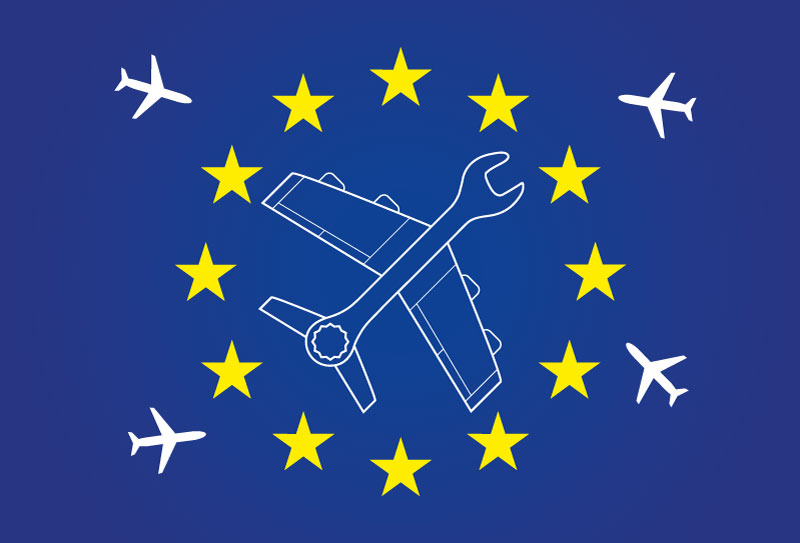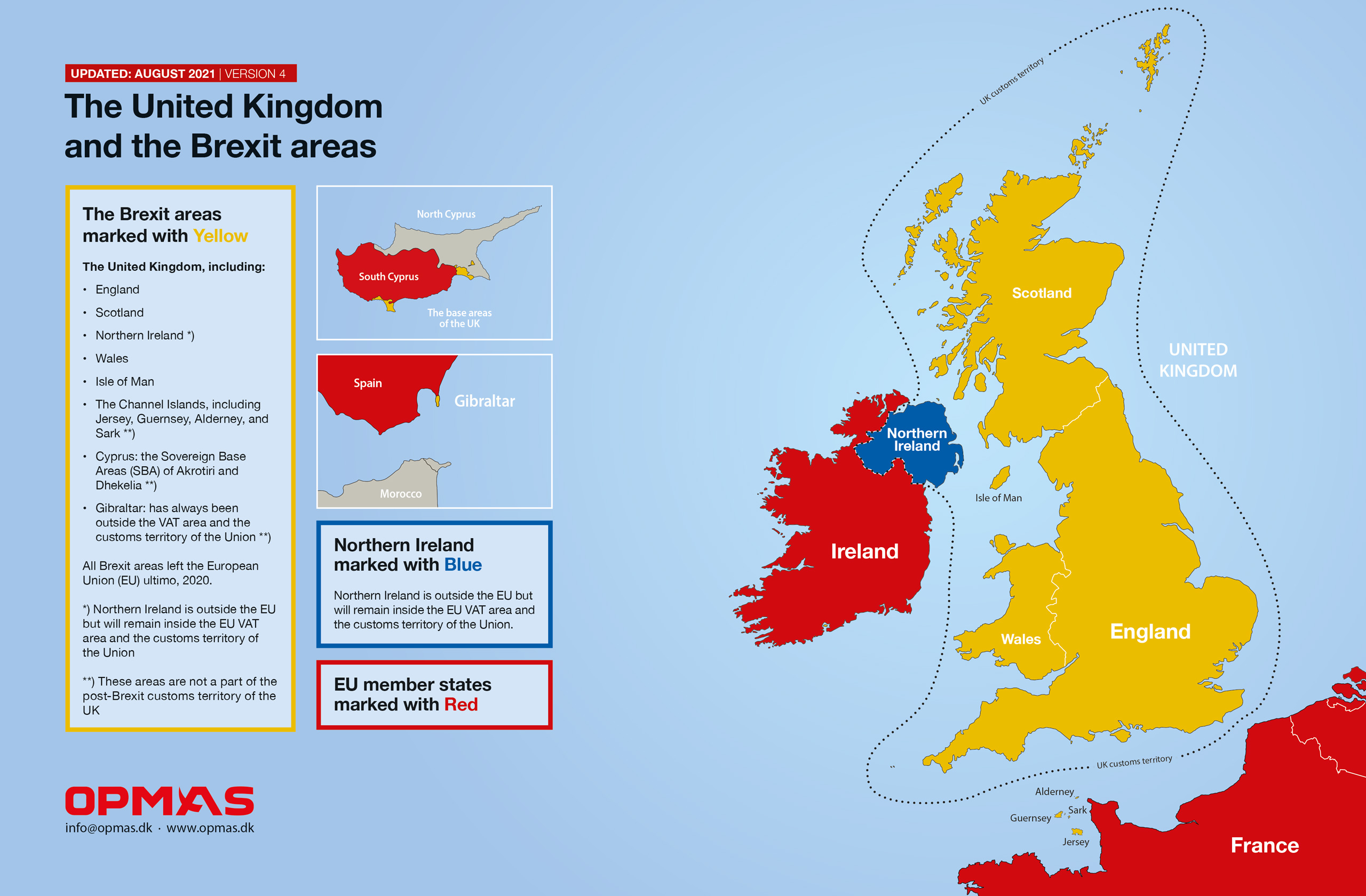COMMERCIAL AND CORPORATE FLYING WITHIN THE EUROPEAN UNION
Short & Sweet no. 10
How to handle aircraft maintenance correctly in a customs context

- What about an aircraft’s normal Maintenance, Repair, and Overhauls (MRO)?
- What about improvements of aircraft?
-
Are there differences between work done inside and outside the EU?
-
Potential problems for EU outsiders with a full EU importation
- Learn how to avoid the pitfalls
 In this article, we dive deeper into the customs context of correctly handling aircraft maintenance within and outside the EU.
In this article, we dive deeper into the customs context of correctly handling aircraft maintenance within and outside the EU.
Aircraft maintenance performed within the EU
EU insiders: always use the normal VAT accounting methods for any work performed.
EU outsiders: non-EU-based operators and owners will have to use a customs procedure called Inward Processing, even though the aircraft is already correctly EU customs import-handled with the use of the TA procedure or a full importation. The Inward Processing procedure is mandatory and must be initiated by the local workshop performing the work on the aircraft immediately after the arrival at the workshop. Using the Inward Processing procedure allows the workshop not to charge EU VAT on the invoice, so the procedure must be handled correctly.
Aircraft work performed outside the EU – both EU insiders and outsiders
The handling depends on whether improvements to the aircraft have been made.
Only regular maintenance performed: customs should be handled under the normal Returned Goods Relief rules, typically called the three-year rule. A customs declaration is made by the sole act of crossing the outer EU border if the return flight is less than three years after the departure.
An improvement has been made: the Outward Processing procedure must be activated at a customs office on the way out of the EU, flying to the workshop. However, any improvements made outside the EU are not an issue if the improvements are made in one of 32 signatory countries of the WTO Agreement on Trade in Civil Aircraft. If the improvements are not made in one of the 32 signatory countries, the Outward Processing procedure must be activated as described above, and a physical customs declaration must be made, declaring the improvements performed when the aircraft returns to the EU. Wrong handling of the above, including a missing arrival declaration, could result in serious customs fines.
IMPORTANT!
Potential problems for EU outsiders with a full EU importation
Any fully EU imported aircraft must follow the above. This will, in some cases, create problems for aircraft that have been fully imported by EU outsiders, such as US, Swiss, Middle Eastern, and Asian operators, in cases where improvements have been made outside the mentioned 32 signatory countries and where the Outward Processing procedure have not been activated prior to the workshop visit, and no customs end-declaration is completed when returning to the EU. The aircraft must be physically present within the EU to activate the Outward Processing procedure, and, e.g., an Asian-based aircraft normally getting aircraft work done in Asia will, of course, not fly to the EU with the only purpose of activating the Outward Processing procedure. Nevertheless, there is a serious risk of fines if these procedures are incorrectly handled. Aircraft using Temporary Admission when visiting the EU will not have this problem.
What is the difference between normal maintenance and improvements?
The list can differ between EU member states, but we suggest the following examples:
These examples are typically maintenance work:
- Repair and/or maintenance of the aircraft by replacing batteries, brakes, oil, wipers, tires, etc.
- Service, guarantee, or courtesy work, such as maintenance of the air conditioning system
- Repair and/or maintenance of the aircraft engines
These examples are typically improvements:
- Installation of a Wi-Fi system that was not installed beforehand
- Installation of a new type of avionic or equipment that was not installed beforehand
- Installation of a zero-time engine
- Complete repainting
- New seating and interior if the old was not worn out
How can we help?
If you have questions about the above, please do not hesitate to contact us.
List of all OPMAS
Short & Sweet mails:
No. 22 – What does it take to be compliant?
Jun 2024 TA FI
No. 21 – Part 4: Using Temporary Admission – how to prepare for a customs ramp check
Jan 2024 TA
No. 20 – Buying or selling aircraft within, to, or from the EU
Nov 2023 TA FI
No. 19 – The real differences between full importation and Temporary Admission
Sep 2023 - Updated 2024 TA FI
No. 18 – Exporting an aircraft from the EU
Jun 2023 - Updated 2024 FI
No. 17 – What is the correct use of a corporate aircraft?
Mar 2023 - Updated 2024 FI
No. 16 – Which customs procedures can be used for parking an aircraft within the EU?
Jan 2023 - Updated 2024 TA FI
No. 15 – Liability and risk elements associated with EU importation and admission
Oct 2022 - Updated 2024 TA FI
No. 14 – Part 3: Using Temporary Admission – when does an operator need help?
Aug 2022 – Updated 2024 TA
No. 13 – Importation impacts when traveling the world in corporate aircraft
Jun 2022 - Updated 2024 FI
No. 12 – How to get the 0% airline VAT exemption meant for commercial operators
May 2022 - Updated 2024 FI
No. 11 – Part 2: Using Temporary Admission
– what do customs look for during a ramp check, and why?
Mar 2022 – Updated 2024 TA
No. 10 – How to handle aircraft maintenance correct in a customs context
Feb 2022 - Updated 2024 TA FI
No. 9 – Part 1: Using Temporary Admission – the Supporting Document
Dec 2021 – Updated 2024 TA
No. 8 – Do not fall into the operator trap when flying within the EU and UK
Oct 2021 - Updated 2024 TA FI
No. 7 – Which offshore aircraft registrations can be used with Temporary Admissions when flying within the EU and UK?
Sep 2021 - Updated 2024 TA
No. 6 – Flying with EU-resident persons onboard when using Temporary Admission
Aug 2021 - Updated 2024 TA
No. 5 – What about private use
of corporate aircraft?
May 2021 - Updated 2024 TA FI
No. 4 – What does ‘VAT paid’ mean?
Mar 2021 - Updated 2024 FI
No. 3 – Is a full importation needed
in both the UK and the EU27?
Mar 2021 - Updated 2024 FI
No. 2 – Flying commercially
within the EU
Feb 2021 - Updated 2024 TA FI
No. 1 – Flying with the
CEO
Nov 2020 - Updated 2024 TA FI

